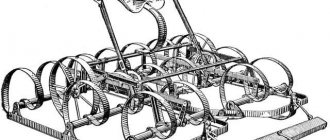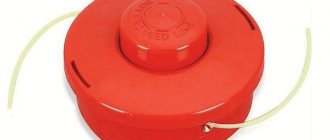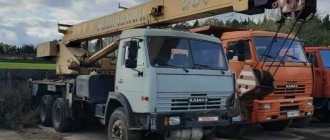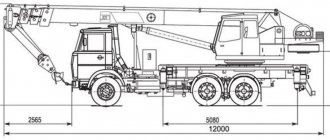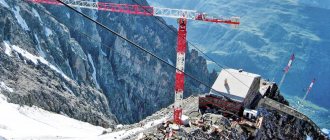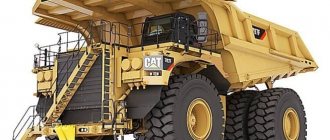A telpher is an electric hoist combined with a carriage or trolley for moving. It ensures the movement of cargo not only in the vertical, but also in the horizontal plane, using special guides (I-beams). At the same time, it has high productivity and is suitable for intensive use.
An electric hoist consists of a block mechanism driven by an electric motor, a gearbox, a drum for winding a cable, a stopper and a hook for temporarily securing loads.
Where and how are hoists used?
Hoists are constantly in demand in areas such as heavy industry, construction, warehouses, manufacturing, etc. They are used for lifting and moving heavy loads. It is prohibited to use it for lifting people or working with hot and liquid metal; toxic explosive and flammable substances, as well as in explosive and fire hazardous areas (with the exception of special explosion-proof modifications).
Electric hoists are used as independent equipment, or as part of more complex lifting mechanisms for lifting loads with various types of cranes (bridge, cantilever, etc.).
With their help, very heavy and complex-shaped loads are quickly and safely lifted: units, mechanisms, machine tools, etc. Unlike manual and electric hoists, the hoist provides high speed of handling loads, greatly increasing the efficiency and productivity of labor.
Pipe laying crane
The pipe-laying crane is classified as a tractor type; it is used for laying communications. They are used as the main component of the laying assembly column. The mechanisms are used at a great distance from equipment service points. If any unit in the column breaks down, the entire system will fail.
Therefore, the units must have high strength and reliability. During pipeline construction, these machines may drive over rocky, uneven surfaces. In this regard, they must have high cross-country ability, which is determined by ground pressure, traction indicator and ground clearance.
Since during operation the main load falls on one side of the unit, their design is a self-propelled boom device without a rotating part with a side fixation of the boom. Units are produced on tracks and pneumatic wheels.
The tracked device consists of the following elements:
- base chassis;
- lifting equipment, which includes a frame, a durable winch, a stable counterweight, an easy-to-use boom, a hook and a hydraulic system.
Marking of hoists
All hoists are designated by brands, each of which contains important information about the technical characteristics of the hoist. In the designation of a hoist, as a rule, there are 5 mandatory marks indicating the main characteristics of the hoist in the standard version, as well as 6 additional ones. Having studied the simple principle of labeling when placing an order, you will not need additional clarifications on functionality and characteristics. In some cases, this will save money, since even with the standard version it is possible to exclude a number of options.
Support crane beam
The supporting version of this mechanism in its design provides for the presence of a guide, which is fixed to the supports. They are usually made in the form of a square made of metal or concrete or rails.
A device of this type is represented by the following elements:
- drive unit;
- span beam;
- end beam attached to the span;
- end beam resting on crane tracks;
- device for lifting loads.
The control panel can be placed inside a special cabin. In other modifications it can be lowered down. In this case, control is performed from the floor using a push-button station.
Hoist classification
Electric hoists are classified according to a number of characteristics:
- By type of movement: stationary or mobile.
- According to climatic use.
- According to the lifting height.
- According to the multiplicity of pulleys.
- By type of lifting mechanism.
By pulley type
A pulley block consists of several rotating or non-rotating blocks, between which a rope or chain is passed. This characteristic determines their tensile strength. Indicated by the number of block devices that are used to increase the mass and speed of lifting loads: 1/1, 2/1, 2/2, 4/1, etc. Some designs may specify other ratios. This parameter determines the lifting speed, load capacity, and efficiency. In hoists, two types of pulleys are used: high-speed and power.
By type of movement
These are stationary and mobile models. The former are capable of lifting loads only in a vertical plane. They have a higher load capacity than mobile hoists. Mobile models move loads vertically and horizontally. But this requires the additional use of a monorail trolley.
By type of lifting element
An oiled steel rope or a calibrated chain is used as a lifting element in hoists. Chain hoists are able to easily move large loads, evenly lifting them, hooked simultaneously from several sides.
According to lifting height
Hoists can be produced in two versions: with normal (standard) and with reduced (reduced) construction height. The latter is used in rooms with strict height restrictions, and is also used to assemble an overhead crane and crane beams, or to lift and move loads along a monorail or I-beam.
According to version
Stationary hoists allow lifting loads only in the vertical direction, while the load capacity of such lifting mechanisms is higher than that of mobile hoists. Mobile hoists are capable of moving loads in both vertical and horizontal directions.
In addition, there are design options for operation in conditions of severe frost or high humidity, for example, a tropical climate, as well as in an aggressive (with a high content of chemically active elements) or normal environment.
Electrical diagram
Enterprises often install mechanisms that are controlled from the floor. In this case, the electrical equipment is located on the end beam. If you look at the main trolleys, there is a shield on the opposite side of them. Magnetic starters for the electric motor of the mechanism are located here. Circuit breakers are located on panel 2. The limit switch is located on the end beam.
The supply of current to the electric hoist is carried out using a KRPT cable (a cable in a rubber sheath of a portable type is heavy). This is a flexible product with copper conductors.
Important CAT Wheeled and Crawler Excavators
When installing the cable, 1 end is fixed to the trolley end beam in a stationary position, and 2 is connected to the hoist. During installation, the crane control circuit must be taken into account.
The cable is suspended using rollers. Their movement occurs along a wire made of steel. The electrical equipment used to control the crane beam is fixed on the hoist. In order to be able to control magnetic starters, a push-button station is used. It is suspended from the lower side wall of the cabinet in which the electrical equipment is located. A steel cable is used to secure the equipment.
If the mechanism is operated indoors, it is necessary to ground it. It is accomplished through the use of natural communications. They are made of metal and then laid in the ground. Another option would be to install a ground loop.
The system consists of a circuit of electrical wiring that is connected to the beam and the ground. If a breakdown of the equipment insulation occurs or the wiring insulation is damaged, a current will arise on parts of the crane structure. When grounded, the earth acts as a receiver of electrical current.
When using crane equipment, the following elements must be grounded:
- body structure made of metal;
- electrical equipment housings;
- shells and casings made of metal, covers and other surfaces made of this material;
- protective pipelines.
The electrical circuit must be taken into account. The grounding method depends on what crane equipment is installed at the enterprise
It is also important to consider the operating voltage
Differences between the hoist and other lifting devices
The main difference between a hoist and hoists and other lifting devices is its high productivity and the ability to work for a long time in intensive mode. It is connected to an industrial electrical network of 380 V (optional - 220 V). At the same time, it has a long service life and safe wired remote control.
Telpher and hoist
Hoists are considered one of the closest solutions to hoists in solving complex problems. They are manufactured with three types of drives: electric, mechanical and manual. The most convenient and productive is the electric hoist. This is a compact lifting device with an electric motor, a system of suspensions and load securing. The hoist has a load capacity of up to 12 tons, while the hoist is capable of handling loads weighing up to 50 tons.
Crane beam and hoist
Often, when performing complex tasks, it becomes necessary to make a choice between a overhead crane or a hoist. Each type of equipment has a number of advantages that allow them to be used to solve certain problems.
A beam crane is a bridge lifting device that has a moving system. Its ends rest on specially equipped tracks (so-called crane tracks).
This is the difference from a standard hoist. Crane beams come in two types: support or suspended. The supporting ones have a supporting beam and are located below the plane of the supporting structures. In the second option, the elements are arranged in reverse.
The main advantage of the crane beam is the presence of four degrees of freedom. Thanks to this, the possibilities for manipulating loads are significantly expanded: lifting or transporting them in different directions.
Metal faucet components
Features of the configuration of crane beams
To ensure strength, diaphragms with stiffeners are inserted inside the beam. The main beam and end beams are connected by welding or using bolts. The second method eliminates the possibility of deformation and guarantees quick and accurate installation of the crane.
The weight of the outer, auxiliary wall of the bridge is reduced due to cutouts in the metal sheets, without reducing its load-bearing characteristics. The main beam may experience bending deformations from constantly moving loads. To prevent its deformation, the beams are given a construction lift in advance, that is, when cutting the steel sheets, they are slightly bent upward.
The end beams, which have a rectangular shape, have limiters. If the crane is used in an open area, additional anti-theft devices are installed to protect against wind.
Drive types
There are 2 types of drives installed on the crane beams: manual and electric.
Manual variety
This type is suitable for handling loads that are light in weight. The movement speed of this type of device is lower than that of those made with an electric mechanism. In them, the working tool is represented by worm-driven mobile hoists
The drive is made up of a shaft, which is combined with running wheels. The transmission is connected to the traction wheel using a chain.
Electric drive is more common. To move cargo, it uses a winch or hoist, which are mounted on special trolleys.
The mechanism is activated by:
- gearbox;
- trolley wheels;
- electric motor.
Basic device parameters
The main parameter that distinguishes a beam crane is the weight of the load being lifted. In addition, the following features are highlighted:
- The load capacity of this mechanism depends on the type of its design. For support beams this value is 1-10 tons.
- Suspended structures have a smaller value, not exceeding four to five tons.
- The speed of the mechanism may vary.
Hanging devices are somewhat slower. Their speed does not exceed 0.5 meters per second. In the description of this mechanism, data on the span size must also always be indicated. For this type of device, it ranges from 3 to 28 meters (sometimes 28.5). The span is supposed to be the area (space) that the device can serve.
This parameter can be divided into 2 categories:
- with one span (these devices are characterized by a length from 3 to 15 meters);
- with two spans (these devices correspond to a length from 7 to 12 meters).
Using suspended types of beam cranes, loads can be lifted to a height of 6-36 meters. For supporting types of crane beams, this value is lower and reaches 6–18 meters.
https://youtube.com/watch?v=T4NRjuCtnKY
Metal variety
These beams are usually made in the shape of a rectangular box by welding four steel sheets.
Often, lattice trusses or bent sheets are used for its manufacture. This is done in order to increase the structure’s resistance to bending under the influence of significant weight loads.
The wall of the bridge, located in the body, is supporting. Consequently, the outer wall acts as an auxiliary one.
Metal with cutouts is sometimes used to make the auxiliary wall. Thanks to this solution, the weight of the entire structure is reduced. The cuts are made in such a way that the load-bearing capacity of the structure is not reduced.
Single and double beam varieties
Metal types of crane designs most often have frames with a double-girder device.
A single beam crane is also found in this type of device. It is usually made from an I-beam with a triangular or rectangular cross-section and, as in the case described above, is made in the form of a truss or sheet. Diaphragms are welded inside the main beams to strengthen the structure.
They are located at an angle of 90 degrees to the bearing axis of the beam. Their length is almost identical to the height of the walls. With a large length of the main beams, there were often situations where they sagged inward due to their inability to withstand the impressive weight of the loads being moved. To eliminate this drawback, the beams are first bent upward, thus forming the so-called construction rise.
The structure of the end beams is similar to rectangular boxes. Axle boxes and crane movement limiters are installed on them. In devices that are operated outdoors, additional anti-theft systems are placed inside the end beams. They protect the process of movement under the influence of strong winds.
The operation of this kind of mechanisms in construction and other areas greatly simplifies the performance of many works. And in some cases, using them at work is the only possible way to move or lift loads. This is why their prevalence is so high.
What is a beam crane
The device consists of the following parts:
- control system;
- end beams;
- load-bearing bridge;
- telpher (hoist).
Manufacturers offer consumers different types of mechanisms; for example, organizations may require a rotating crane beam. Each mechanism comes with an instruction manual. When making a choice, it is necessary to take into account the technical characteristics and operating principle of the equipment. One mobile system differs from another in the weight of the load it lifts and its design.
Weights are moved using a hoist, the movement of which is carried out along the rail tracks of the beam. The end beams are equipped with wheels. They are needed so that the device can move along crane tracks.
Beam cranes differ from overhead cranes in that they have a lightweight configuration. This is a single girder device, while the overhead crane can be double girder. Both systems use crane rails. The company can install 1 or more crane beams in the garage for medium loads and an overhead crane for moving large loads.
Businesses operating in different industries often require a overhead crane; They can find out model descriptions from the companies that produce the equipment. The devices are compact in size, so they are used to perform work in hard-to-reach places and narrow spans.
Manual variety
Consumers must select beam cranes based on the weight of the loads being moved around the site. Devices equipped with a manual drive are suitable for use in closed areas. They are in demand in warehouses; such systems are rarely used for open-air work.
Important TOP 2 models of Profi motor cultivators for work in the vegetable garden
Crane tracks are made in the form of suspended I-beams; the drive consoles of the mechanism are suspended from them. Beam cranes of this type are suitable for operation at temperatures from -20 to +40°C. If necessary, you can purchase custom-made equipment that is designed to work in the Far North. Having installed the system, you can move loads at low temperatures, for example, at - 40°C.
The manual drive works because it is driven by a traction chain. It is responsible for the rotation of the drive rod sprocket, which is fixed on the beam brackets. In the process of moving the load, the system transmits force to the trolley gearbox.
Additional services
Our company provides services for dismantling, modernization and repair of cranes. We carry out the following work:
Important Description and technical characteristics of the MTZ-320 tractor
• transfer of control of crane equipment from the cab to radio control “TELEKRANE” or control using a pendant remote control; transferring control from the pendant console to the “TELEKRANE” radio control system;
• synchronization of the operation of two units by connecting them to the “TELEKRANE” radio control system;
• changing the equipment control mechanism by connecting frequency regulation instead of a relay contactor drive control circuit;
• expanding the functionality of the equipment, for example, adding options for limiting load capacity, micro-speed, soft start and stop, etc.;
• installation of safe closed trolley current leads "CARIBONI" with dismantling and reconnection of the old power supply system.
To carry out loading (or unloading), lifting, and transportation work, special construction equipment such as a beam crane is used. This attachment allows you to perform essential construction tasks, tasks that other tools cannot perform.
